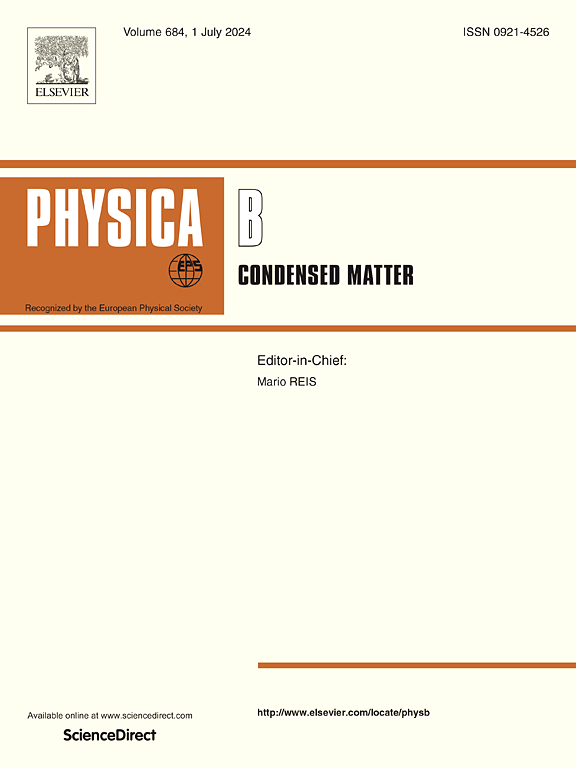An insightful observation concerning the effects of co-doping with Zn and Sn on the magnetic and non-linear optical response of CdO thin films
IF 2.8
3区 物理与天体物理
Q2 PHYSICS, CONDENSED MATTER
引用次数: 0
Abstract
In this work, we have investigated the doping effects Zn and Sn on nonlinear optical response and magnetic response of CdO thin films prepared by cost-effective spray pyrolysis method. The optical efficiency was determined from the optical absorbance, transmittance, and linear refractive index. Dielectric parameters were calculated and found to be increased with increasing wavelength and co-doping elements. Dielectric loss decreased with increasing energy level. Uv–vis absorbance spectra were utilized to obtain band gap and were found to be in the order of ∼2.42–2.50 eV. A noticeable improvement was found in nonlinear optical parameters for (Zn + Sn) co-doped CdO lattice, where was estimated to be around esu, ∼ esu, and ∼ esu; respectively. The dispersion of refractive index was analyzed in terms of Wemple–DiDomenico (WDD) single oscillator model. The oscillator parameters , were calculated and discussed. The nonlinear refractive index of the (Zn + Sn) co-doped CdO thin films was calculated and displayed a correlation with the linear refractive index. The effective oscillator energy () increased with concentration of doping elements (from 4.86 eV to 5 eV) similar to optical band gap and optical moments ( and ) were found to be decreased with increasing concentration of Sn co-doping. Again, optical conductivity was found to be increased with Zn-doping and Sn co-doping concentration. From the magnetic investigation it was found that paramagnetic CdO lattice transformed to ferromagnetic lattice after co-doping because of magnetic interactions among the dopant atoms. All these results comprehend that (Zn + Sn) co-doping elements improved the nonlinear properties of CdO thin films.
求助全文
约1分钟内获得全文
求助全文
来源期刊

Physica B-condensed Matter
物理-物理:凝聚态物理
CiteScore
4.90
自引率
7.10%
发文量
703
审稿时长
44 days
期刊介绍:
Physica B: Condensed Matter comprises all condensed matter and material physics that involve theoretical, computational and experimental work.
Papers should contain further developments and a proper discussion on the physics of experimental or theoretical results in one of the following areas:
-Magnetism
-Materials physics
-Nanostructures and nanomaterials
-Optics and optical materials
-Quantum materials
-Semiconductors
-Strongly correlated systems
-Superconductivity
-Surfaces and interfaces
 求助内容:
求助内容: 应助结果提醒方式:
应助结果提醒方式:


